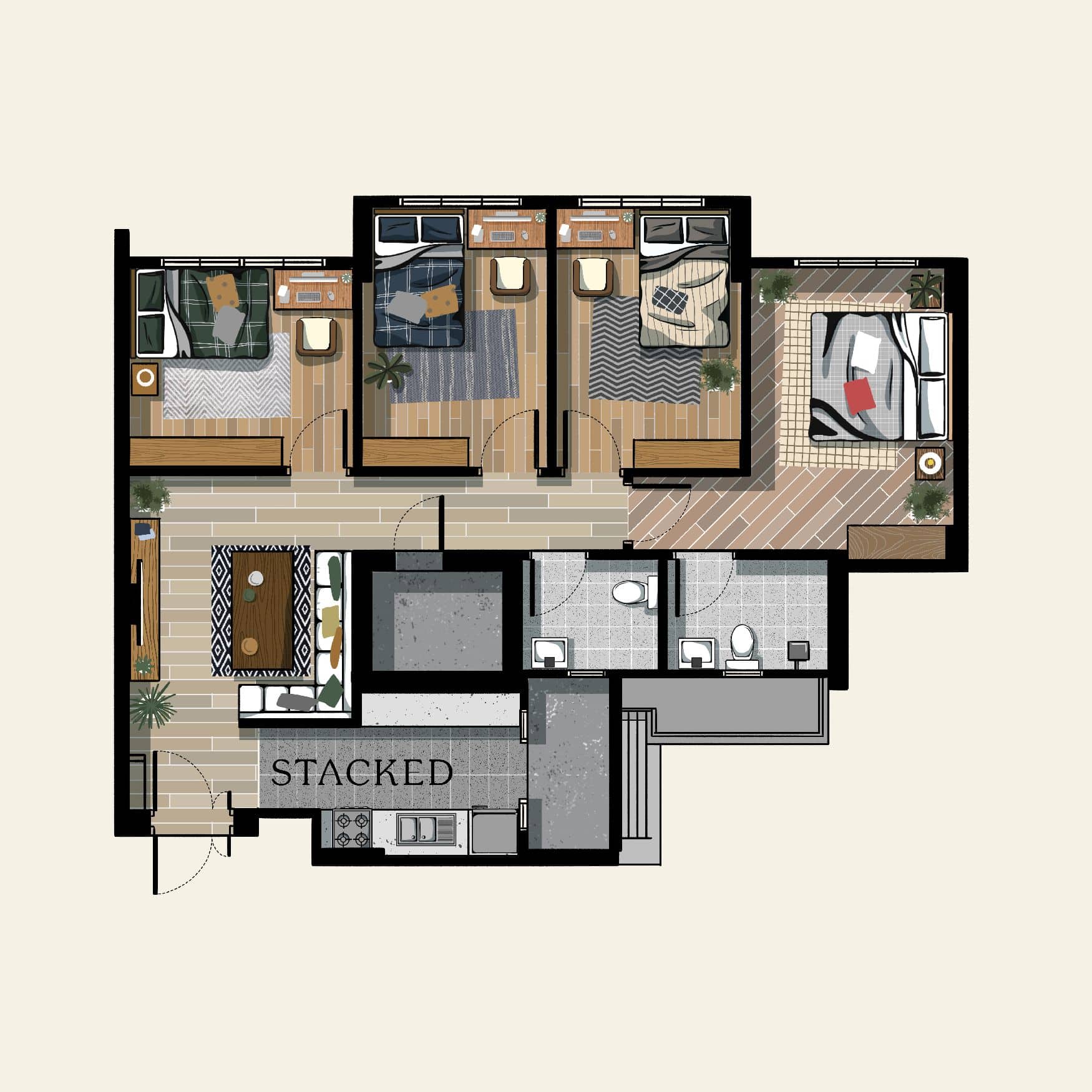5 Clever Tricks To Make Your Small Home Look Bigger
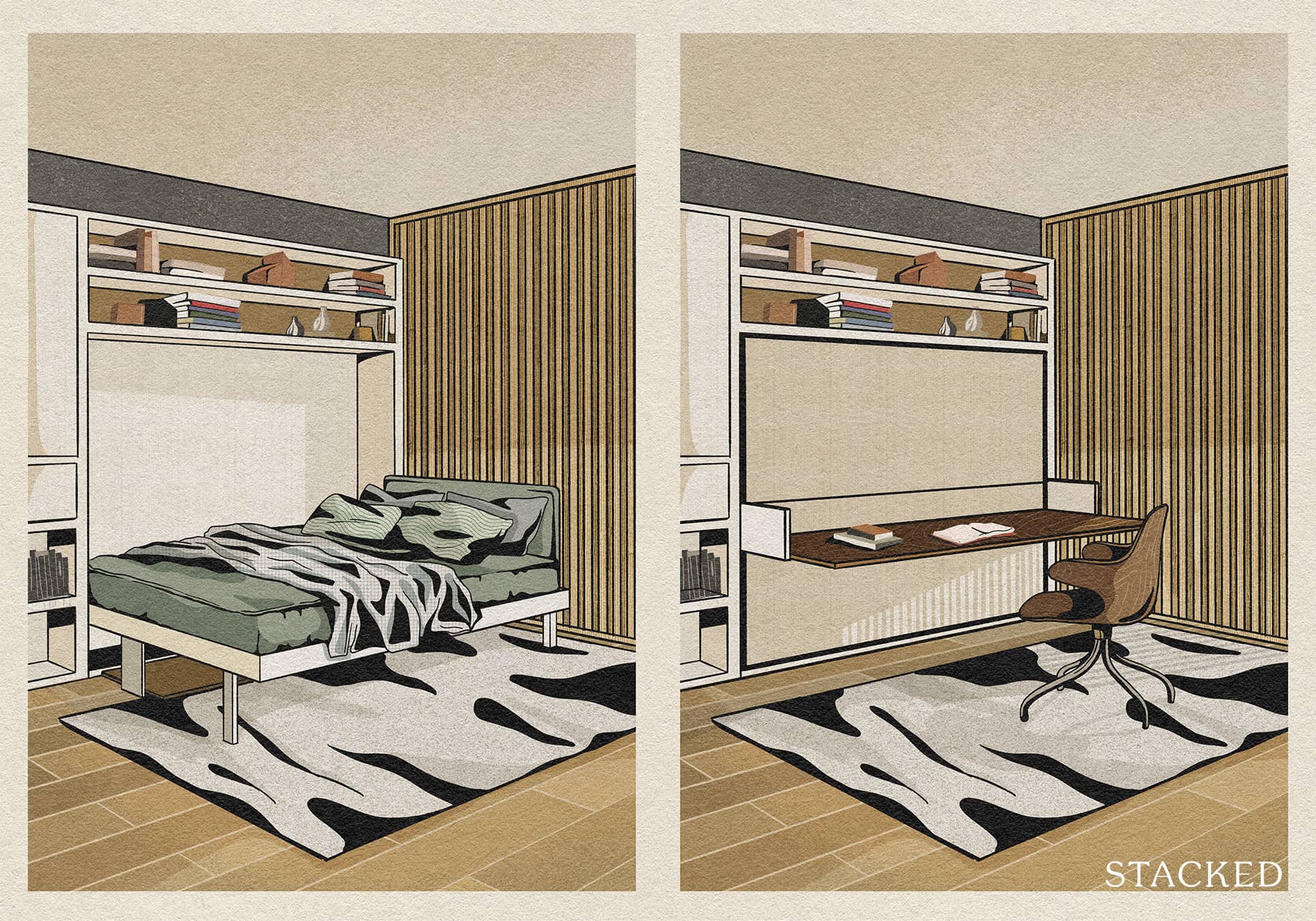
Get The Property Insights Serious Buyers Read First: Join 50,000+ readers who rely on our weekly breakdowns of Singapore’s property market.
Adriano is an old school real estate guy. Prior to establishing his own architectural/engineering design firm in New York City, he’s worked for a Brooklyn-based developer developing multifamily residential projects across the 5-Boroughs. In Singapore, he has experience with managing hospitality projects and rehabilitation of conservation shophouses. In his free time, he enjoys photography.
Small homes can be really tricky to design, mainly because it’s really challenging to be able to remain practical (eg. having enough storage), but yet still look good.
Many people don’t realize this, but there are a lot of visual tricks that you can employ to make a space feel bigger.
Visit most show flats in Singapore, and you’ll find that they are very adept at making a space look as spacious as possible. From custom furniture to strategic placements of mirrors and lights, it’s the reason why most buyers are very surprised when they visit their new, empty home for the first time.
Their first thought? “Where did all that space go!?”
Well, if you aren’t one of those blessed with having a large home in Singapore, it’s not the end of the world. With a bit of thought and careful planning, you can still make your home feel bigger than it actually is.
I have a modestly sized home myself (@madspatial), so I know what it’s like to have to design around a small space. Here are some of my tips to help you transform even the smallest of spaces into one that feels spacious and invitingly comfortable.
Table Of Contents
1. Utilise Multi-Functional Furniture
Most people would say declutter, declutter, declutter. And while that’s true and that would be the most obvious thing to do, there are other things you could do too.

Once you’ve tidied up, a good way to make the best use of space would be through multi-functional furniture. These pieces serve a dual purpose, providing storage and seating or sleeping options. When you don’t have enough space, each piece should ideally be able to fulfil more than one function.
For instance, a coffee table takes up so much space in a small living room. And from a space-to-function ratio, it’s not really optimal. As such, something like the Feo Pouf by noo.ma could be used instead. It can be a stool, or a side table as the top grey wool cushion is removable.
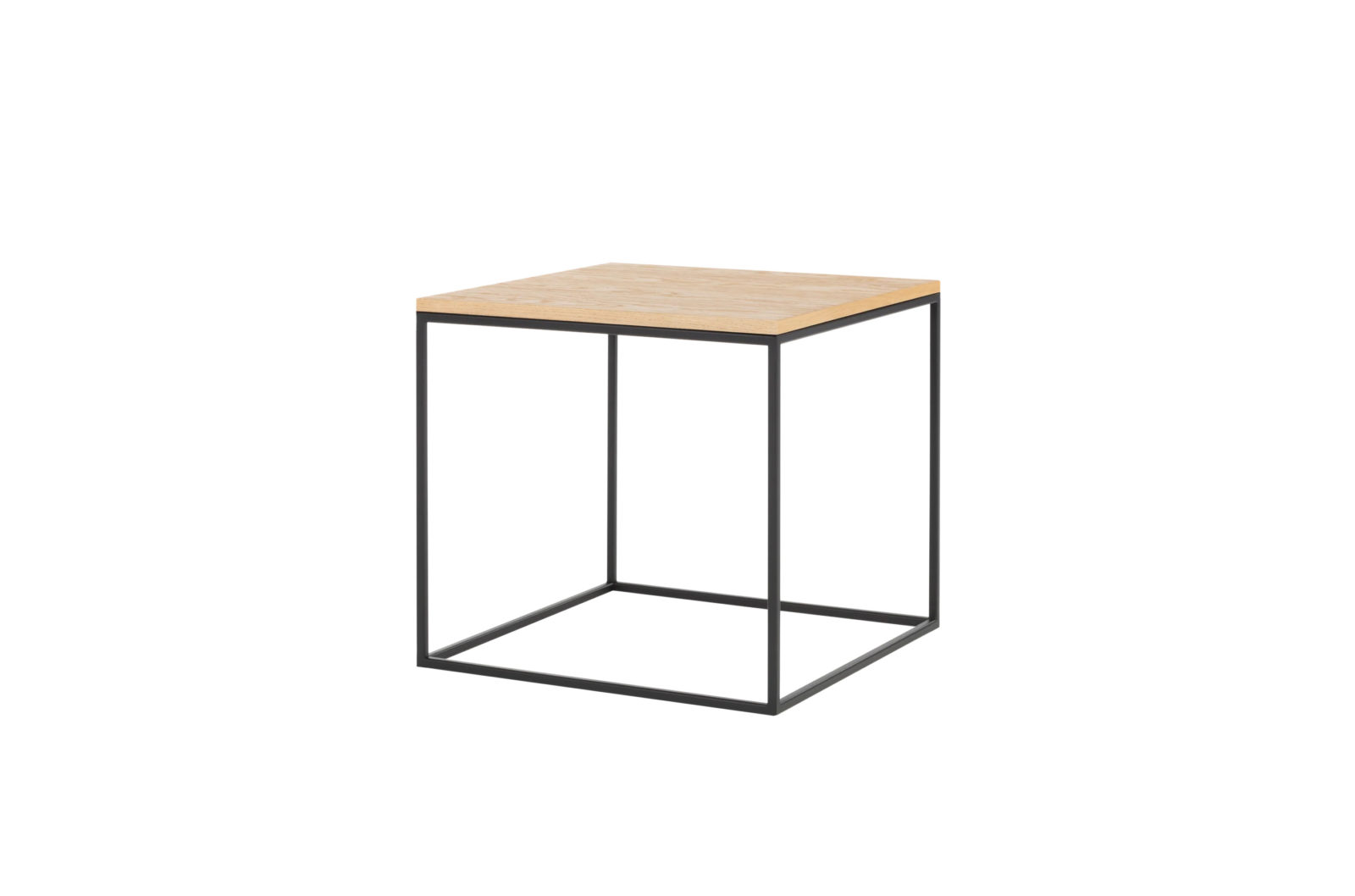
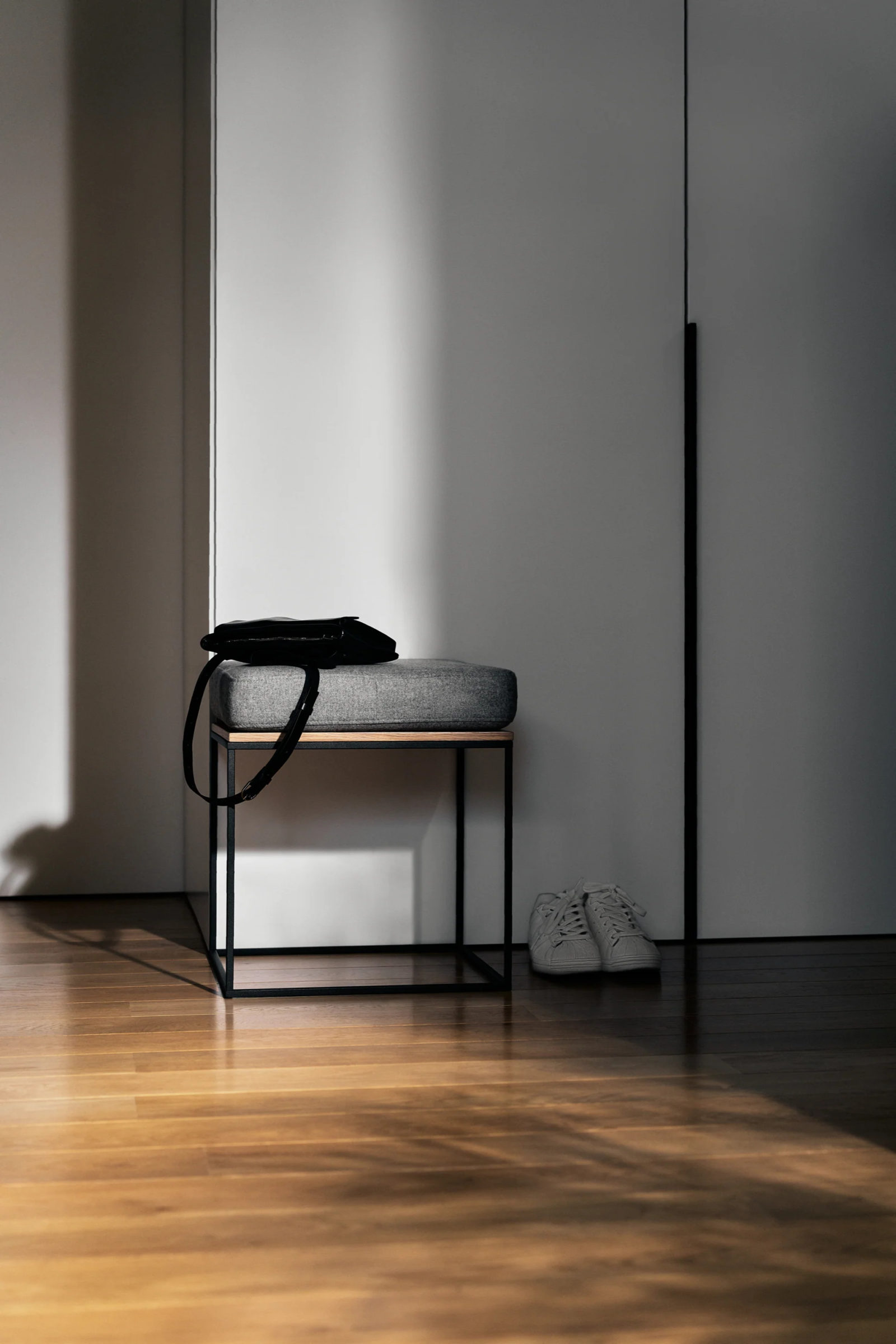
Other examples include a sofa bed that can be used as a comfortable place to sit during the day and a cosy bed at night. Another option is bench seating with storage space inside, which can store blankets, pillows, or other items.
The best example of multi-functional furniture is probably the Ottoman bed. It’s a perfect space-saving solution for small apartments, as it doubles as a storage area and a bed. Some ottomans can also be converted into chairs – perfect for hosting guests. Another great option is a Murphy bed that folds away when not in use, freeing up valuable floor space.
2. Incorporate Hidden Storage Solutions
Hidden storage solutions are a fantastic way to keep a small space organised and clutter-free. They are ideal for keeping items out of sight, providing a more streamlined and minimalist look.
Some examples of hidden storage solutions include under-bed storage, built-in cabinets, and seamless cabinetry.
A perfect example of incorporating hidden storage is a bed with drawers underneath. It is a useful way to store clothes, shoes, and linens without taking up extra space.
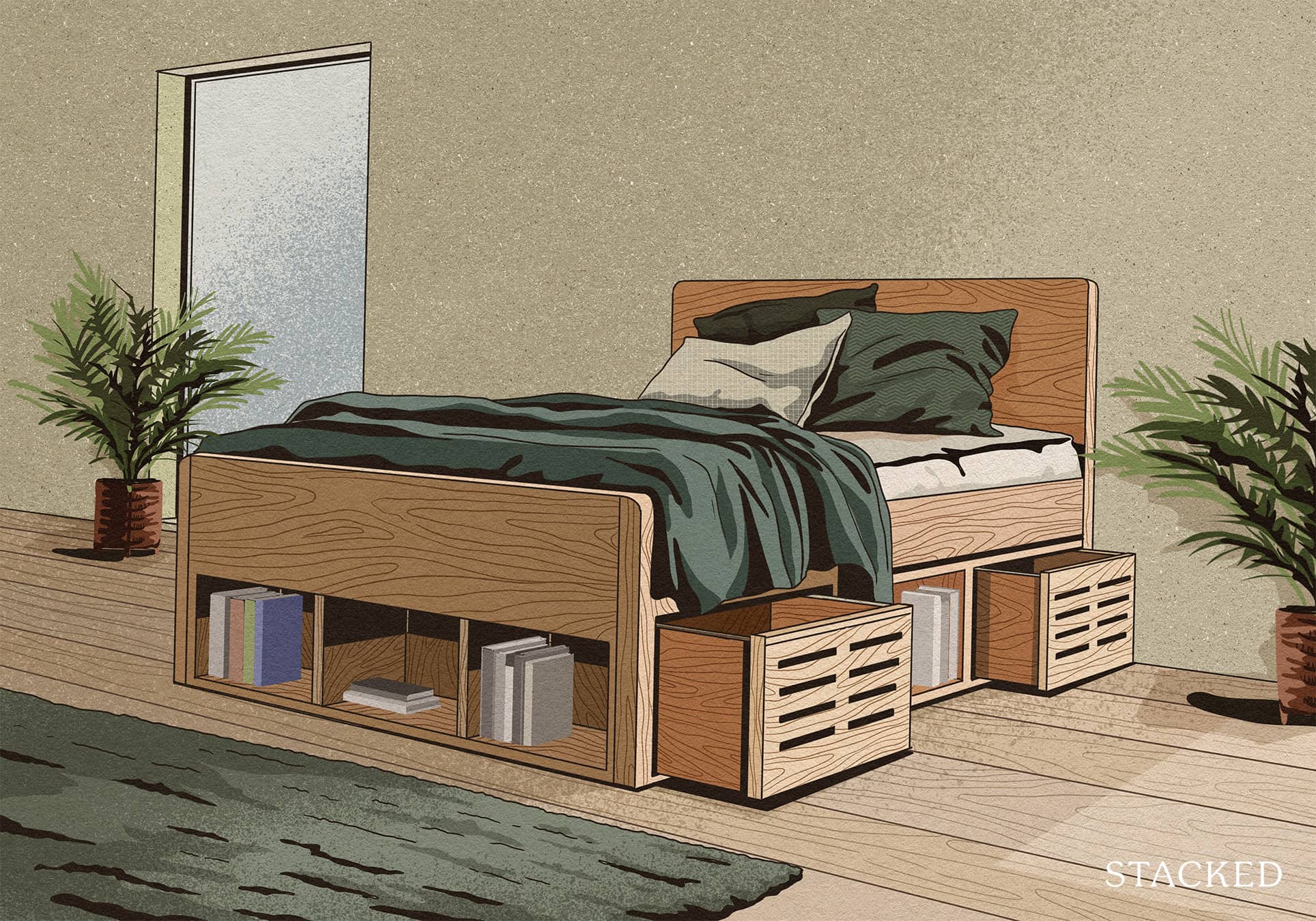
Another option is a built-in bookshelf that doubles as a hidden storage solution. The bookshelf can be designed with a hinged or sliding door that conceals storage space behind it. The idea is not to keep every single piece of storage hidden, you have to be deliberate about it to make it central to the design.
3. Use Mirrors to Create the Illusion of Space
Mirrors are an excellent design element for small spaces because they reflect light and make the area feel more spacious. They can also be used to create an illusion of depth, making the space appear larger than it actually is. A large mirror positioned across from a window can amplify the natural light in the room.
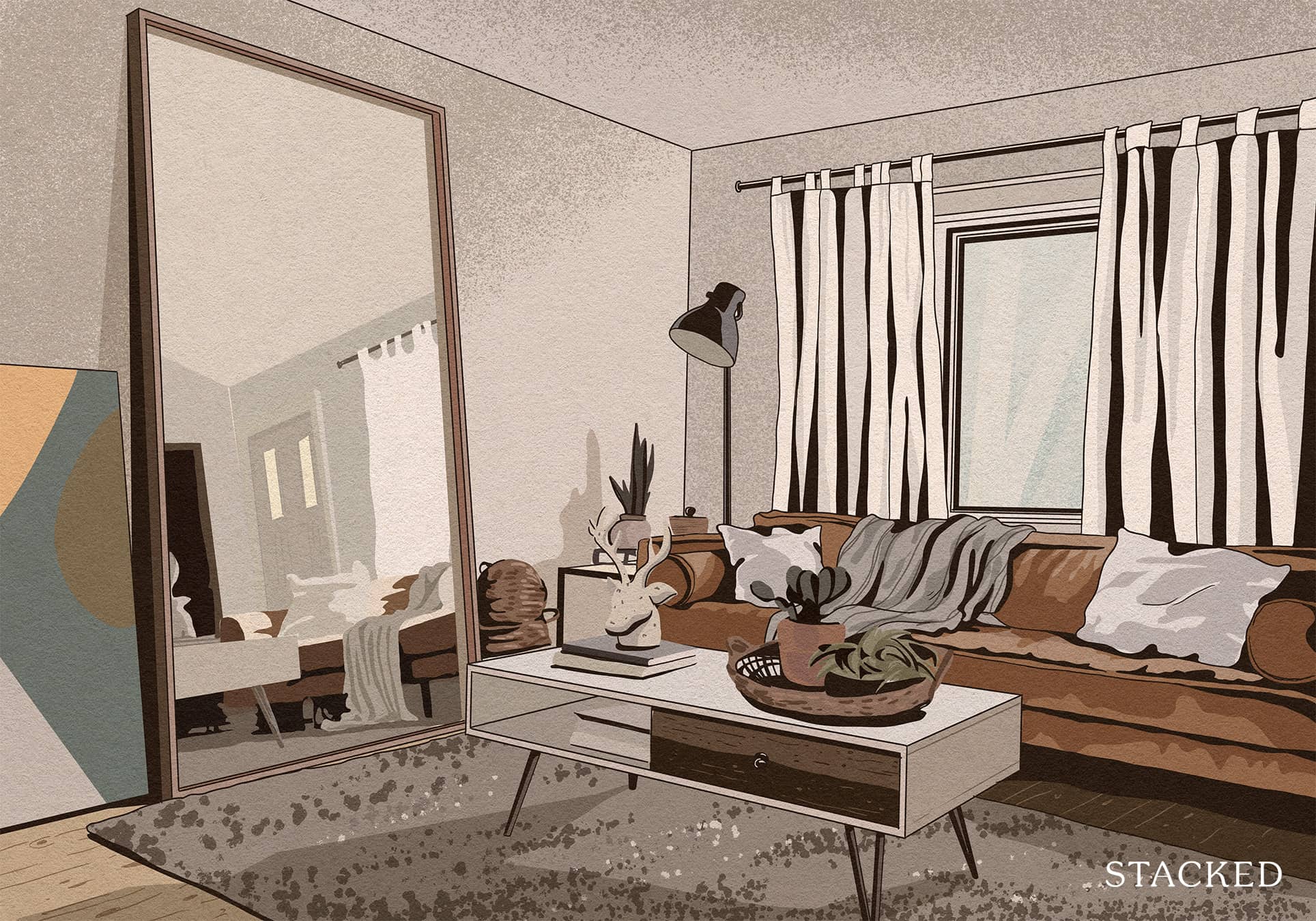
One example of using mirrors is placing a large mirror in the living room or bedroom. A full-length mirror can be placed behind the sofa or the bed, reflecting the light and making the space appear larger.
Some people may go for a mirror-ed wall instead, but I do find the maintenance for such a lot more work. Ultimately, the most important thing is to find the right position. There’s no point in it to reflect light, only to find that the view in the mirror is the reflection of something unsightly!
4. Choose a Light Colour Palette to Make the Space Feel Bigger
Generally, a light colour palette will be better than a dark one to make a small space feel bigger. Light colours reflect more light than dark colours, making a room feel more spacious.

Whites, pastels, and neutral shades are popular choices for small spaces. However, a small pop of colour can add interest to the room.
Painting the walls white or off-white is a good application of this tip, which helps to add colourful accents through decor and furnishings.
Another option is to choose a monochromatic colour scheme, where all the colours used in the room are variations of the same hue. For instance, a blue-grey wall can be paired with light blue furnishings and decor to create a cohesive and calming space.
5. Install Floating Shelves for Vertical Storage
Floating shelves are wall-mounted shelves that do not have any visible brackets or supports, giving the appearance that they are “floating” on the wall. Because my living room lacked space, this was what I did for more storage as well as a place to style everything properly.
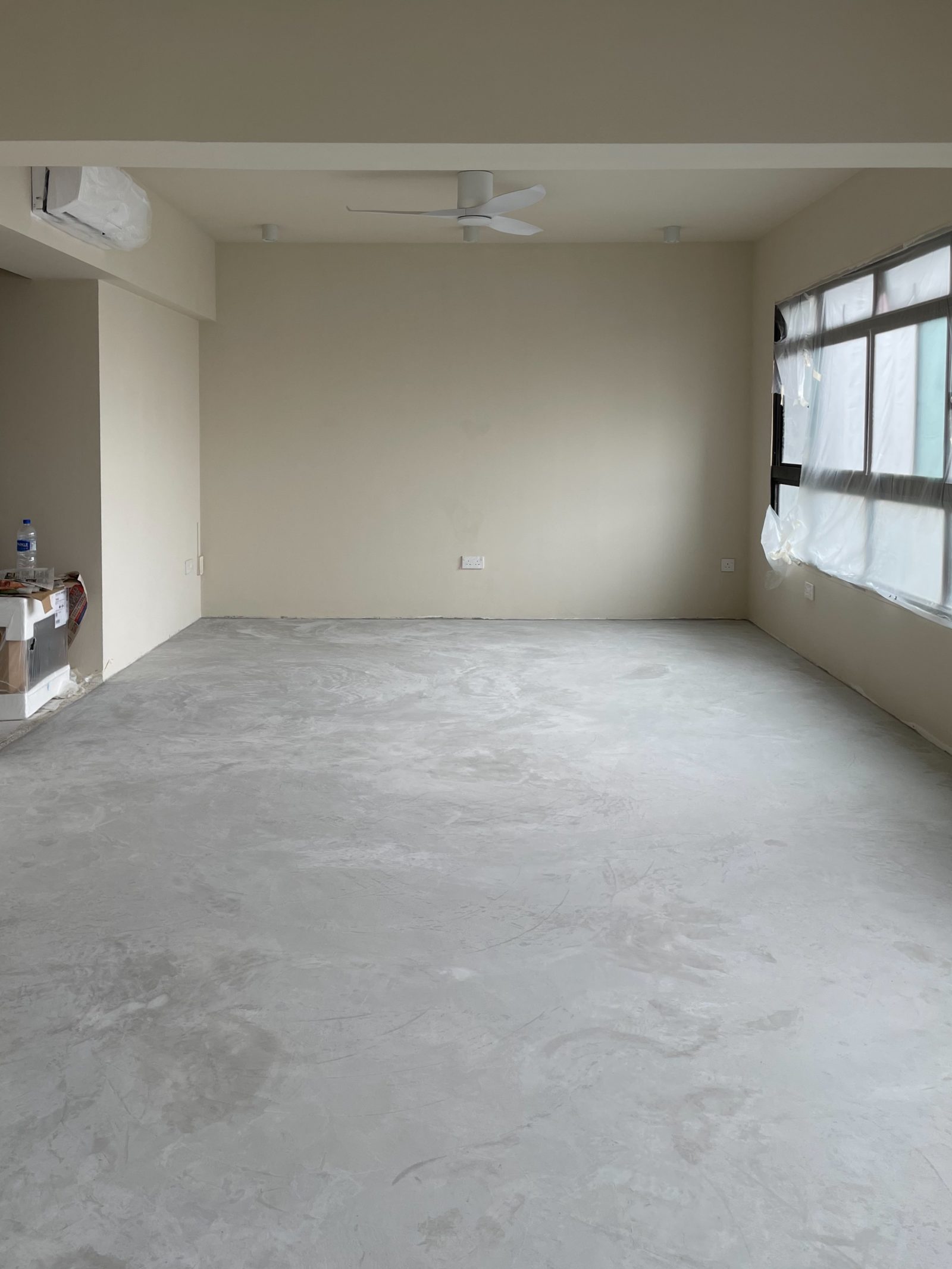
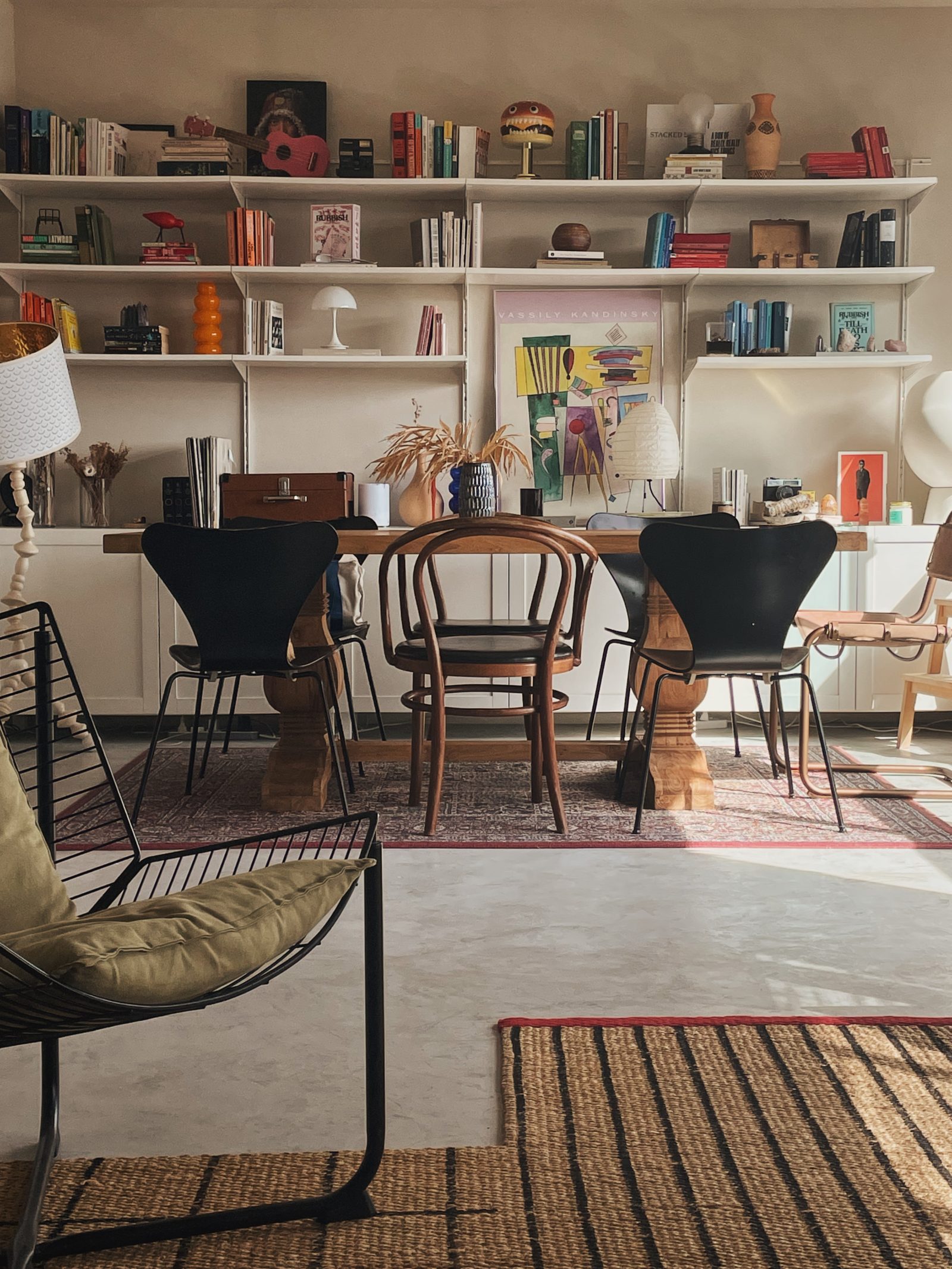
This makes them a great space-saving solution as they take up minimal floor area while at the same time providing ample storage for books, decor, and other small items.
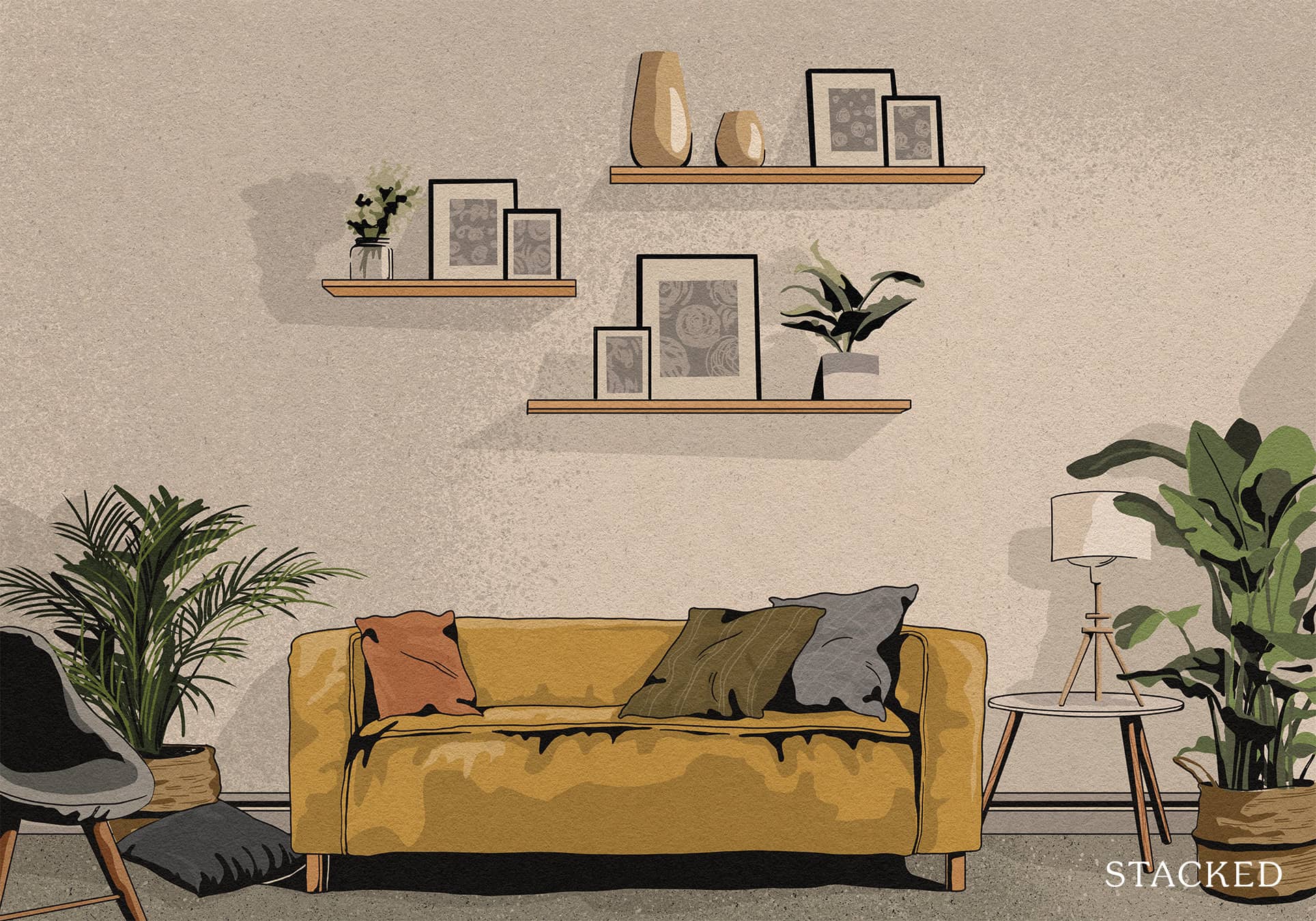
Floating shelves are also incredibly versatile and can be customised to fit any design style. For a minimalist look, choose simple and clean-lined shelves in white or natural wood finishes. If you’re into a more eclectic or bohemian vibe, opt for shelves in unique shapes and finishes, such as hexagonal or gold-leafed shelves.
As mentioned above, floating shelves can also be used as a design feature in your small HDB unit.
Consider incorporating them into a gallery wall display, alternating framed artwork with shelves to create a dynamic and layered look. Or, use them to showcase your favourite decor pieces, such as plants or candles.
At Stacked, we like to look beyond the headlines and surface-level numbers, and focus on how things play out in the real world.
If you’d like to discuss how this applies to your own circumstances, you can reach out for a one-to-one consultation here.
And if you simply have a question or want to share a thought, feel free to write to us at stories@stackedhomes.com — we read every message.
Adriano Tawin
Adriano is an old school real estate guy. Prior to establishing his own architectural/engineering design firm in New York City, he’s worked for a Brooklyn-based developer developing multifamily residential projects across the 5-Boroughs. In Singapore, he has experience with managing hospitality projects and rehabilitation of conservation shophouses. In his free time, he enjoys photography.Read next from Property Advice

Property Advice We’re In Our 50s And Own An Ageing Leasehold Condo And HDB Flat: Is Keeping Both A Mistake?

Property Advice Should We Buy An Old 99-Year Leasehold Condo To Live In: Will It’s Value Fall When The Lease Runs Out?

Property Advice We Own A $800K 1-Bedder And A $1.1M 3-Bedder: Is It Possible To Upgrade To A 4-Bedder Condo?

Property Advice I Own A 55-Year-Old HDB Flat, But May Have To Sell — Can I Realistically Buy A Freehold Condo With $700K?
Latest Posts

Pro How A 625-Unit Heartland Condo Launched In 2006 Became One Of 2025’s Top Performers

Property Investment Insights Does Buying A One-Bedroom Condo Still Make Sense As An Investment In 2026

Property Market Commentary Why This Once-Ulu Town In Singapore Is Going To Change (In A Big Way)

Editor's Pick This HDB Just Crossed $1.3M For The First Time — In An Unexpected Area

Singapore Property News “I Never Thought I’d Be Sued by a Tenant.” What Long-Time Landlords in Singapore Miss

Editor's Pick I Lived In Bayshore When It Was ‘Ulu’. Here’s How Much It Has Changed

Editor's Pick HDB Resale Prices Finally Slowed in 2025 — Will It Continue in 2026?

Singapore Property News Breaking News: District 23 Condo Sells Out In Under Two Years At $2,120 Psf Average

On The Market Here Are The Cheapest 3-Bedroom Condos in Central Singapore You Can Still Buy From $1.15M

Property Market Commentary Why The Singapore Property Market Will Be Different In 2026 — And It’s Not Just About Prices

Editor's Pick 2025 Year-End Review Of The Singapore Property Market: What The Numbers Reveal

Pro This 21-Year-Old Condo Didn’t Sell Out Initially, Yet Became A Top Performer

Editor's Pick How The HDB Resale Market Performed In 2025, And What It Means For 2026 Prices

Editor's Pick 4 Key Trends Reshaping Singapore’s New Launch Condo Market In 2026

Editor's Pick What I Only Learned After My First Year Of Homeownership In Singapore



